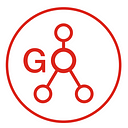How GO helps provide an understanding of National Societies’ preparedness to respond to emergencies
In the face of a sudden shock, our capacities can be stretched to their limit, even if emergency response is our ‘business’. Like all organisations, National Red Cross Red Crescent Societies (NS) have different strengths and weaknesses. Knowing which weak points might buckle under a strain, so that we can reinforce these areas, is therefore critical to maintain a well-functioning response operation.
The concept of preparedness to respond to disasters is one that has rightly gained importance over the last decades. In 2001, the Well-Prepared National Society (WPNS) self-assessment provided National Red Cross and Red Crescent Societies with a ‘toolkit’ to understand if they had the right capacity to manage disasters. Several years later, the Preparedness for Effective Response (PER) mechanism was developed with a similar intent, but with a focus on enabling NS to take action to improve their response capacity.
The goal of the PER is for NS to assess, measure and analyse the strengths and gaps in its preparedness and response mechanisms so that they can take the necessary action to improve their capacity to respond in disasters. As of April 2023, nearly half (91) of our IFRC network, has been engaged with this process, with 76 of them having completed a first PER assessment. Through this process we can feel more confident of the Red Cross Red Crescent’s ability to serve the needs of millions of vulnerable people across the globe. We also better understand how to target support to those weak areas at national as well as thematic levels.
PER translates the broad understanding of preparedness into multiple targetable objectives that can be assessed via an evidence-based approach. The results of the PER assessment identifies the key components and areas that would require strengthening and be prioritized within the NS preparedness and response work plan.
What is the role of GO in improving PER data access?
GO is the IFRC network’s operational data platform. It offers user-friendly forms, tailor-made visualizations, and customized data access permissions, all important to enable a smooth collection, access, and management of PER data. GO also offers the ability to integrate PER data on other workflows, including the 3w project tracking system, meaning potential weaknesses (i.e. demand) can be linked to solidarity and support (i.e. supply) provided across the network.
Since last year, the PER team has been actively trying to improve the PER experience on GO. We started by looking at improving existing PER functional requirements to revamp the user experience and allow easier access to PER assessment analytics. The goal was for NS to take more advantage of the information that they have.
The team has also been working on introducing new features dedicated to the assessment, prioritization, and work plan phase of the PER approach. Ideally, this would enable each NS focal point to securely share data and dashboards, recording their action path after evaluating their assessment data and connecting PER to other response data in GO.
As mentioned earlier, the Red Cross and Red Crescent Movement works towards providing better support mechanisms to affected NS. PER information contains key data for that purpose but has been deemed private by design. Now, the team is working on a solution that improves data accessibility, enabling better sharing of PER information, but with NSs retaining ownership of their data.
The “PER in GO Sprint”
The GO Sprint event had two phases. The first consisted of two online meetings with the PER, Information Management (IM), User experience (UX), and GO platform experts to discuss and set up the basis for functional requirements. Wireframes were then developed by Yellow Umbrella (YU) UX designers to help inspire and guide the following phase.
The second phase consisted of multiple in-person focused discussions around the wireframes, providing the opportunity to iterate on the designs and make quick adjustments and feedback between the PER team, IM team, UX designers, and GO developers.
The summary of the GO Sprint journey, from functional requirements identification to its retrospective, is available on this Miro board.
The flexibility, openness, and good vibes from the different team members were essential to making the most out of this Sprint. Some takeaway points of the retrospective session included:
The “that worked well didn’t it?” bits…
- Focused discussion with each team (e.g., UI/UX, Devs, IM, PER).
- Clear division of Sprint phases (time given between phases was key to enable information processing).
- Hybrid sessions were good, although more benefits were seen in face-to-face meetings.
- Using the “DREF in GO” experience to support the different work (e.g., workflow design).
- Team members’ enthusiasm and engagement.
- The participation of different actors from PER business processes (e.g., IM, facilitators, lead), offered different sets of experiences and perspectives.
- Different working environments favored creativity and positive mood.
- Well-scoped sprint (what is included vs. what is not was well identified).
- The preparation work before the Sprint, including functional requirement documents, preliminary mock-ups, and preliminary workflows, supported the different discussions around what to implement.
The “wouldn’t it be nice if…”
- All meetings would have been face-to-face.
- We would have engaged earlier with the Dev team.
- We would have more days for the sprint, especially to process/document all discussed points.
- Organizers would clarify the expected time commitment for the Sprint a few weeks earlier.
- There was more flexibility in logistics, especially when there are less than a dozen participants attending the Sprint.
What now?
The development of PER in GO is already happening! We will continue to prototype and iterate. The PER module, including the five phases of the PER mechanism and the visualization of information for both NSs and the general public, will be launched by the end of this year. Stay tuned!
